Sao Tome and Principe joins the Ramsar Convention

The newest Party to the Convention on Wetlands
The Ramsar Secretariat is very pleased to announce that Sao Tome and Principe has become the 153rd Contracting Party to the Convention on Wetlands - the instrument of accession was received by the Director-General of UNESCO, the depositary for the Ramsar Convention, on 21 August 2006, and so the treaty will enter into force for the new Party on 21 December 2006. The nation of Sao Tome and Principe, Africa's smallest country, comprises two small, volcanic islands in the Gulf of Guinea straddling the equator about 250km northwest of the coast of Gabon, with an overall human population of something like 170,000.
The new Party's obligatory first Wetland of International Importance has been named as Ilots Tinhosas (23 hectares, 01°22'N 007°18'E), two small rocky islands, Tinhosa Grande (20 ha) and Tinhosa Pequena (3 ha), unvegetated and uninhabited by humans, lying between Sao Tome and Principe about 22km south-southwest of the latter. The site supports an important community of seabirds and serves as a breeding site for more than 300,000 migratory waterbirds, including Brown Gannet (Sula fusca), Sooty Tern (Sterna fuliginosa), Brown and Black Noddy, and in lesser numbers, Yellow-billed tropicbird (Phaethon lepturus).
Considerable assistance to the accession procedure was provided through small grants from the Ramsar Secretariat and from a Wetlands International project funded by the government of The Netherlands, including a field mission in September 2005 to survey potential Ramsar sites. Some photographs by Tim Dodman from that mission to some of Sao Tome's wetlands can be seen below.
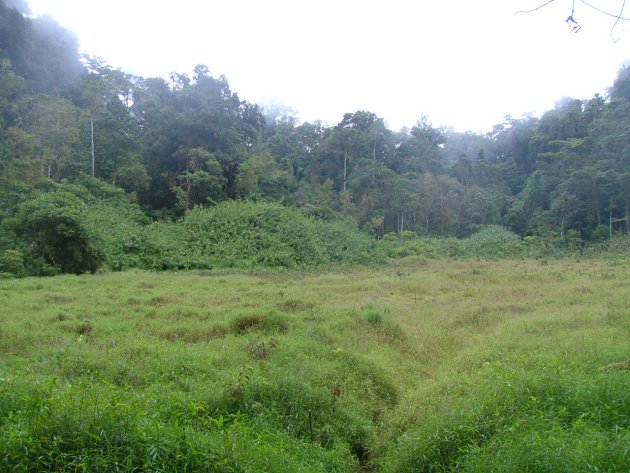
Lagoa Amélia, a small highland wetland on São Tomé that has several species of endemic wetland plants (especially orchids).
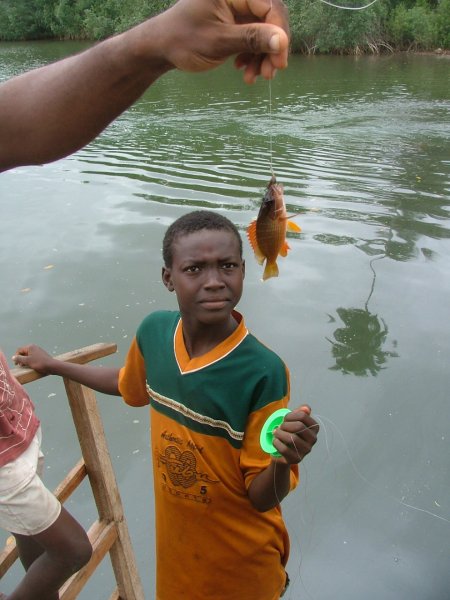
Young boy with his fish at São Tomé's only sizeable coastal lagoon, the mangrove-fringed Rio Malanza.
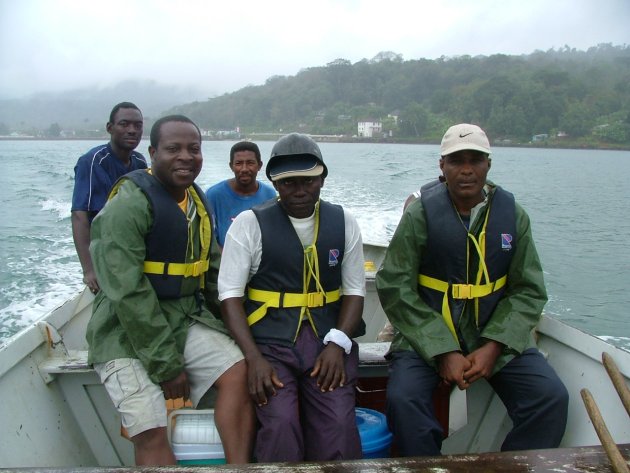
Members of the Ramsar field mission of September 2005, leaving the small harbour of Príncipe.
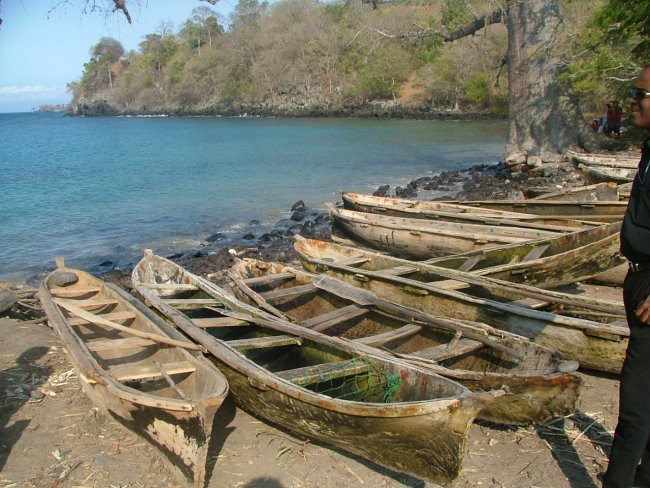
Local fishing canoes at Praia das Conchas, São Tomé.
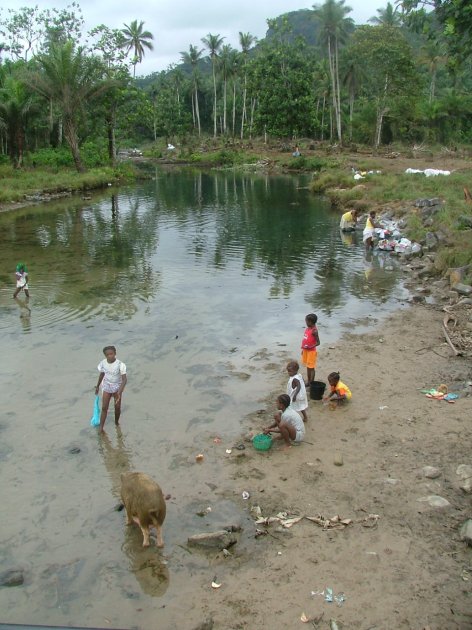
A freshwater stream is used for washing clothes and fish.
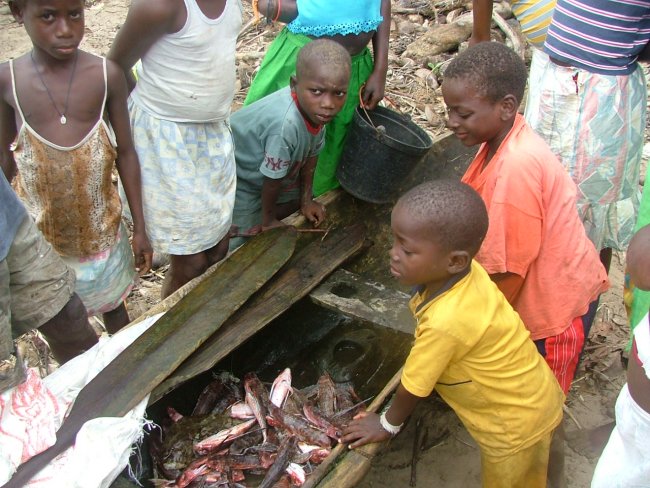
Children meet the fishing boats; one of the main fish caught is the 'con-con' (a type of flying fish).
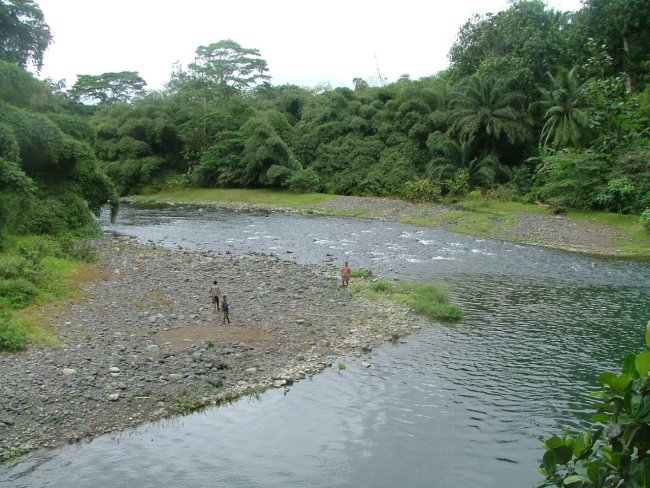
Rio Ió Grande.
-- photographs and captions by Tim Dodman